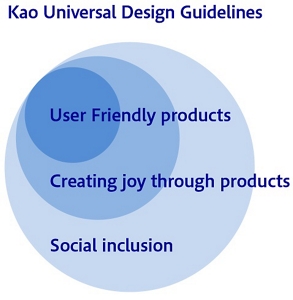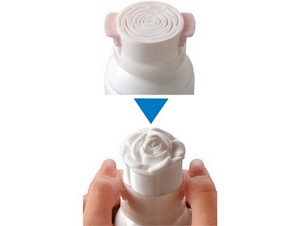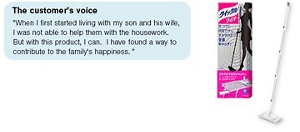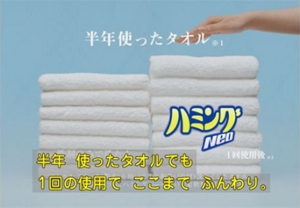Kao Universal Design Guidelines
Kao's time-honored concept of Yoki-Monozukuri fuses easily and naturally with universal design, a concept originally coined by Dr. Ronald L. Mace. Kao Universal Design Guidelines further enhance our abilities to provide products and services that meet the needs of all consumers, fostering loyalty and sustained use.

User friendly products
We strive to deliver "user friendly products" by focusing on "accessibility," "safety" and "usability".
Accessibility
Easy-to-understand category labels

Usability
Detergent which allows people to wash dishes only using one hand

Safety
Safety stopper-equipped mold remover

Creating joy through products
We strive to create products that bring joy to people in their daily lives.
Facial cleanser which makes people enjoyable by using it

Rose shaped foam by one push
Social inclusion
By giving due consideration to diversity and diverse relationships as we influence lifestyles, we aim to contribute to the promotion of social inclusion.
Cleaning tools that are easy to use by any ages and abilities.

Consideration to Diversity


Reducing information gaps through
Closed-captioning TV commercials
The design of products and environments to be usable by all people, to the greatest extent possible, without the need for adaptation or specialized design. Universal design products are created based on ease-of-use for everyone, regardless of any potential barrier, including culture, language, nationality, disability, gender, or age.
The concept, proposed by the late Dr. Ronald L. Mace, former director of the Center for Universal Design at North Carolina State University, comprises the following seven principles.
- Equitable Use : The design is useful and marketable to people with diverse abilities.
- Flexibility in Use : The design accommodates a wide range of individual preferences and abilities.
- Simple and Intuitive Use : Use of the design is easy to understand, regardless of the user's experience, knowledge, language skills, or current concentration level.
- Perceptible Information : The design communicates necessary information effectively to the user, regardless of ambient conditions or the user's sensory abilities.
- Tolerance for Error : The design minimizes hazards and adverse consequences of accidental or unintended actions.
- Low Physical Effort : The design can be used efficiently and comfortably and with a minimum of fatigue.
- Size and Space for Approach and Use : Appropriate size and space is provided for approach, reach, manipulation, and use regardless of user's body size, posture, or mobility.
(The Center for Universal Design (1997). The Principles of Universal Design, Version 2.0.
Raleigh, NC: North Carolina State University)
- Home
- Sustainability
- Making My Everyday More Beautiful
- Universal Product Design
- Kao Universal Design Guidelines
- Home
- Sustainability
- Making My Everyday More Beautiful
- Universal Product Design
- Kao Universal Design Guidelines
